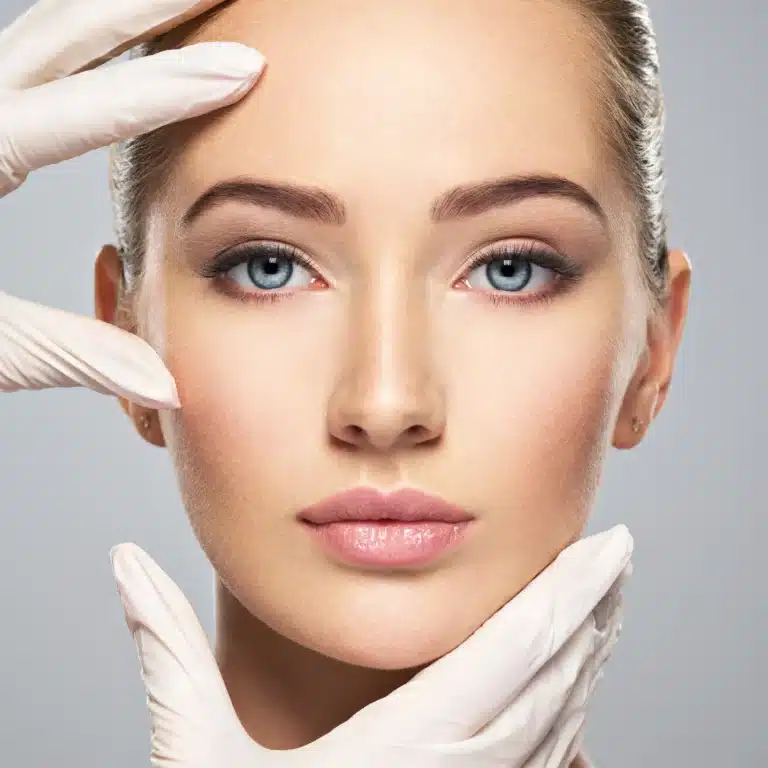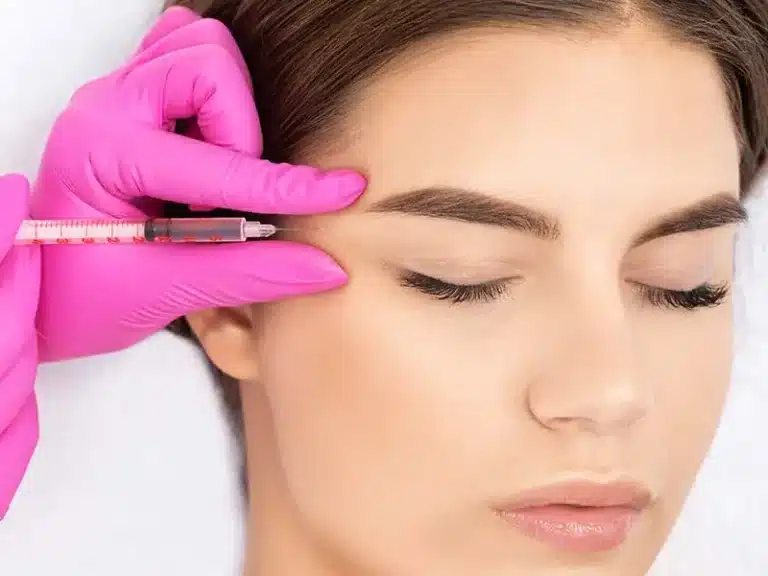Home » Conditions » Face » Temples
The temples are located on either side of the forehead. Anatomically, they are made up of skin, superficial and deep temporal fat, the temporal muscle, and the temporal bone.
This area becomes hollow over time, giving the face a tired and aged appearance.
Hyaluronic acid filler injections can correct this aesthetic concern.
The temples are part of the upper third of the face, and their fullness plays an important role in facial balance and the brightness of the gaze.
Aging of this area is characterized by fat loss and the appearance of a hollow that gives a sad and tired look.
Filling the temples with hyaluronic acid injections
restores a youthful appearance to the face.
Why have injections in the temples ?
Quite simply to combat the aged look created by hollow temples and to treat what is known as facial skeletonization : fat loss that reveals the bony contours.

Over the years, three changes affect the temporal area, causing the temples to hollow .
These changes are responsible for four aesthetic concerns :

Hollow temples can be accentuated by :
Temple filling is an increasingly common practice, aimed at correcting signs of aging and restoring youthfulness and harmony to the face.
Hyaluronic acid injections are an effective treatment to increase temple volume and reshape their contour.
Temple injections, like any medical procedure, must be performed by an experienced doctor. Knowledge of anatomy and technical mastery are essential to avoid the vital structures in this area: the superficial and deep temporal arteries, veins, and the temporal nerve.
It is essential to consult a qualified and experienced doctor to discuss the options best suited to your needs and expectations.
Temple filling with hyaluronic acid injections is intended for patients who wish to restore brightness to the eyes and facial harmony.
The main advantages of the treatment are :
This treatment is particularly indicated for patients who have experienced significant weight loss, which has caused fat tissue loss in the face.

Hyaluronic acid injections can be performed superficially or deeply. Both techniques can be combined.
Deep injections are only possible in the lower part of the temple and along the temporal ridge.
Dr. Romano performs the injection with a needle and uses a fairly firm hyaluronic acid. Perfect knowledge of the anatomy of the area is essential to avoid any complications.
Superficial injection is performed with a cannula and is carried out in the outer part of the temple. Dr. Romano chooses a highly volumizing or moderately volumizing product depending on skin quality, history of temporal or facial lifting, and the amount of volume to restore.
Once again, technical mastery is essential, especially in cases with a history of lifting.
A failed injection can cause visible lumps on the surface or an excess of product creating irregularities that become more pronounced when smiling.
The hyaluronic acid used has a high density, allowing it to restore lost volume without risk of migration and providing long-lasting results.

Injection of Sculptra in the temples is an increasingly popular technique, very trendy in the USA and Brazil.
Used to restore facial volume, Sculptra, or poly-L-lactic acid, is a non-permanent, biocompatible, and biodegradable injectable that stimulates collagen synthesis.
Only one vial of the product is used on the day of injection; a second session is sometimes necessary three months later.
After injections, it is normal to observe slight swelling and redness around the treated areas. These side effects are temporary and disappear within a few days.
The results last two years and become visible three months after the session, as the product gradually stimulates collagen production, which is interesting for people seeking a long-lasting solution.
Filling very hollow temples is not a good indication, as too much product would be required.
That is why Dr. Romano advises starting Sculptra injections around the age of thirty, when the first signs of facial aging appear.
The injection of hyaluronic acid provides an immediate result that lasts about one year.
Filling the hollow eliminates the shadow in the temple area, and the bone is no longer visible, thus addressing facial skeletonization.
The face is rejuvenated, its curves are restored, giving a softer appearance.
The eyes look less tired, and the tail of the eyebrow is lifted.
The aftereffects are mild, with possible side effects including a small transient bruise and minimal swelling.
If a deep injection is performed, the patient may feel a sensation of pressure in the temple and experience mild pain when chewing for two to three days.
If a superficial injection is performed, barely visible surface irregularities may persist for a few days.
Filling the temples helps correct a hollowing often associated with aging.
Two products are commonly used for this indication: hyaluronic acid and Sculptra.
The price of a hyaluronic acid injection for the temples is 600 CHF per syringe. The number of syringes required can vary between 1 and 5. The result is immediate.
Sculptra, injected more deeply, stimulates collagen production, and its effect is gradual. The price of a vial of Sculptra for the temples is 900 CHF. One vial is used for both temples.
The total cost of temple treatment depends on the chosen product and the required volume, which is assessed during the initial consultation.
The frequency of renewal depends on the type of product used and the patient's metabolism. In general, one session per year or every two years is sufficient to maintain results.
The loss of volume in the temples is an age-related change characterized by a hollowing of the temple area, which gives the face a tired and aged appearance.
Treatments are painless. Patients generally experience slight discomfort rather than real pain.
The results of hyaluronic acid injections generally last between nine and twelve months, while the effects of Sculptra injections last about two years. The exact duration depends on several factors, including the patient’s metabolism and the product used.
Yes, when treatments are performed by a trained and experienced doctor, they are safe. It is important to choose an experienced doctor to avoid complications.
The choice of treatment depends on several factors : the extent of volume loss, the patient’s expectations, the quality of the skin, and the facial morphology. A consultation with a doctor will determine the most appropriate treatment.
For non-surgical treatments such as fillers, the effects are reversible. Hyaluronic acid can be dissolved with a specific enzyme if necessary. After surgery such as a temporal lift, the results are permanent, although the natural ageing process continues.
The treatment of hollow temples restores lost volume, harmonises facial contours and gives a more youthful, rested appearance.
The treatments are medical : hyaluronic acid injections, Sculptra, Radiesse, or surgical: autologous fat injections (lipofilling).
Side effects include redness, bruising and slight swelling. These effects are temporary and disappear within a few days.
Contraindications include pregnancy, breastfeeding, certain autoimmune diseases, and allergy to lidocaine. A prior consultation is necessary to assess each patient’s eligibility.
After the treatment, it is recommended to avoid intense physical activities, saunas, and steam baths for a few days. It is also advised not to touch or massage the treated area to prevent any displacement of the product.
Yes, temple treatment can be combined with other aesthetic procedures, such as filler injections for the cheeks or lips, botulinum toxin injections, and other facial rejuvenation techniques. This provides an overall harmonious result.